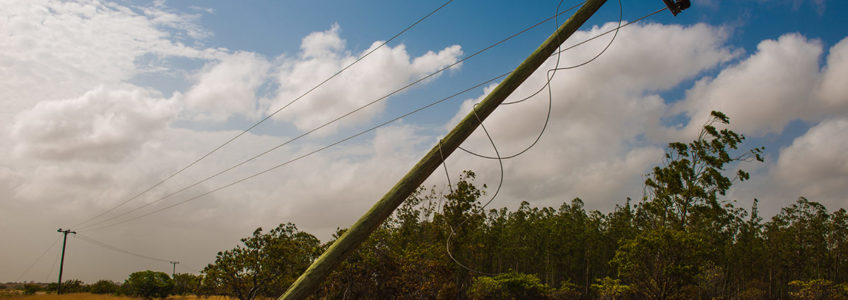
Living in the Midwest we’re no strangers to extreme weather. While the Gulf and Southeast coast are pummeled by hurricanes, we encounter severe thunderstorms, microbursts, tornados, and blizzards. As a result of this, many cities in the Chicago, IL region have placed utilities underground. While this resolves some of the concern of downed power lines and poles, it offers it’s own set of challenges—serviceability for one. Lines and equipment underground means more substations and bringing out the backhoe, dump trucks, and paving equipment if there is line damage in between substations. This, of course, is infrequent. There are many communities within our service area which do still rely upon power pole-dependent electricity. Regardless of how your power is delivered, failures are a part of life; here’s a few tips to stay safe when you come upon exposed or downed lines.
Stand Clear Of The Line
Just because a downed power line line isn’t sparking doesn’t mean it’s dead. Electricity isn’t always visible, and can run through various conductive surfaces, including water. Was the line pulled down by a storm? It’s likely there’s water from precipitation, making the area surrounding the line potentially hazardous. Similarly, if the line falls on your car, do not leave your vehicle until instructed to do so by utility workers. You’re in less danger if you are not completing the circuit and grounding the line yourself.
Notify The Power Company
If you see a down line and no crew on scene, notify the power company immediately. In Chicagoland, Commonwealth Edison, or ComEd provides service and repairs, and they can be reached at (800) EDISON-1. When calling the power company will ask a series of questions related to the severity, hazard to residents and passersby. If the situation warrants, the power company will notify emergency services to assist in “locking down” the area until power can be shut off and crews on scene.
Obey Detours and Restricted Access Signage
Ideally, when emergency service is being performed, energy companies should be installing a temporary emergency fence, but sometimes clean up and repairs will be completed within hours rather than days. Regardless of project duration, crews will at a minimum set up cones, Type II “A” frame signs, and reroute foot and vehicle traffic to a safer path for both passersby and crew personnel. Even if your destination is within sight, follow these directions, for both your safety and that of others.
While it’s an uncommon occurrence, it’s good to be equipped with knowledge and contact information should you encounter an exposed or down power line. If ComEd does not service your area, take a few moments and review emergency contact information for your local power company on their Website. We hope these simple tips will help you remain safe as we press on through the remainder of the storm season.






